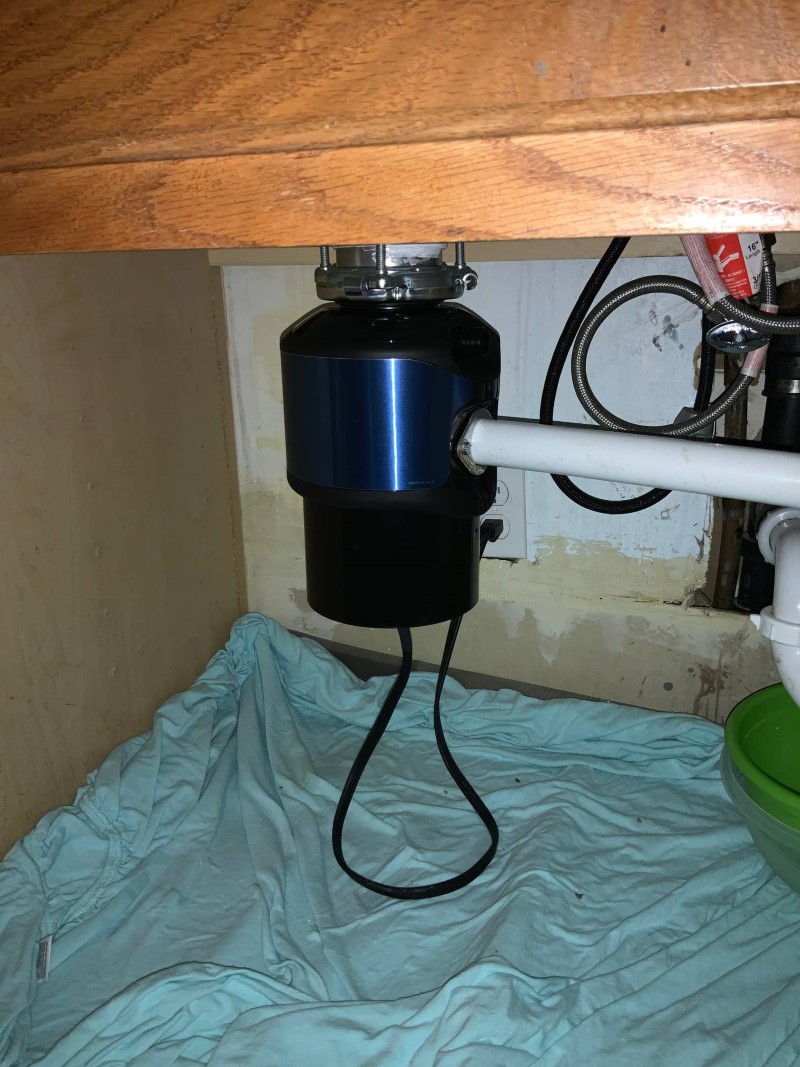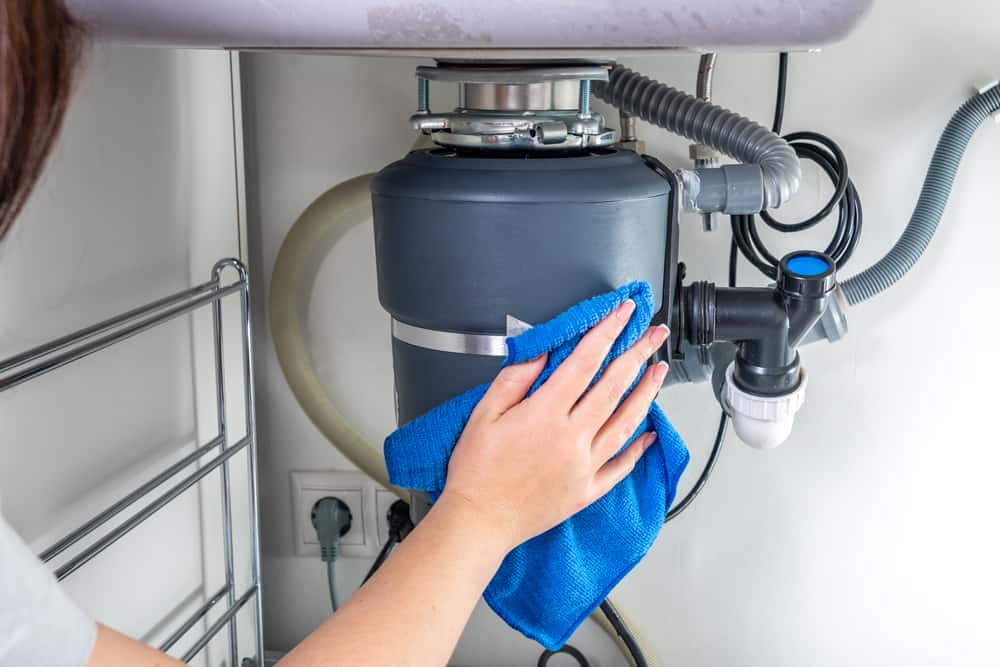Easy Ways to Repair a Leaky Waste Disposal Unit
Easy Ways to Repair a Leaky Waste Disposal Unit
Blog Article
Listed here down the page you will discover a lot of sound answers with regards to How to fix a pretty consistent leak from my garbage disposal.

Waste disposal unit are crucial kitchen area devices that help in dealing with food waste efficiently. Nonetheless, a leaking garbage disposal can be an aggravating and unpleasant problem to handle. The good news is, lots of leaks can be dealt with easily with a few straightforward steps. In this article, we will go over how to take care of a dripping waste disposal unit properly.
Intro
Waste disposal unit are installed under cooking area sinks and are made to shred food waste into smaller items, permitting it to go through the pipes system conveniently. While these devices are usually reliable, leaks can take place in time due to wear and tear, loose connections, or damages to the system.
Typical Sources Of Leaks in Waste Disposals
Worn Seals and Gaskets
Seals and gaskets play an essential role in preventing water from dripping out of the waste disposal unit. With time, these components can weaken, resulting in leaks around the disposal unit.
Loose Links
The connections between the garbage disposal and the plumbing system can come to be loose gradually, creating water to leak out throughout operation.
Cracks or Holes in the Disposal Device
Physical damage to the garbage disposal, such as fractures or holes in the real estate, can also lead to leakages.
Recognizing the Source of the Leakage
Prior to attempting to fix a leaking garbage disposal, it is essential to determine the resource of the leakage. This can generally be done with aesthetic examination or by performing simple tests.
Visual Examination
Inspect the garbage disposal device meticulously for any indicators of water leakage. Pay close attention to areas around seals, gaskets, and link factors.
Examining for Leakages
One way to evaluate for leaks is by running water with the disposal device and looking for any kind of noticeable indicators of leakage.
Tools and Materials Needed for Fixing a Dripping Waste Disposal Unit
Before starting the repair work procedure, collect the required devices and materials, including a screwdriver, adjustable wrench, plumbing professional's putty, substitute seals or gaskets, and epoxy or patching material for fixing cracks or holes.
Step-by-Step Overview to Taking Care Of a Leaking Garbage Disposal
Switch off the Power
Before attempting any repair work, make sure that the power to the waste disposal unit device is switched off to avoid the threat of electrical shock.
Locate the Leak
Identify the specific area of the leak and figure out the cause.
Tighten up Links
Use a wrench to tighten up any loose links in between the disposal system and the pipes system.
Change Seals or Gaskets
If the leakage results from used seals or gaskets, remove the old parts and change them with new ones.
Patching Splits or Openings
For splits or openings in the disposal system, usage epoxy or an ideal patching product to secure the damaged area.
Examining the Waste Disposal Unit After Fixing
Once the repair is complete, test the waste disposal unit by running water with it to make certain that the leak has actually been settled.
Preventive Upkeep Tips to Avoid Future Leakages
To stop future leaks, it is essential to carry out regular maintenance on your garbage disposal. This includes keeping it tidy, staying clear of placing non-food read more products or difficult items down the disposal, and regularly checking for leakages or other concerns.
Verdict
To conclude, dealing with a leaking waste disposal unit is a reasonably uncomplicated procedure that can be completed with standard devices and products. By complying with the steps laid out in this post and exercising preventive upkeep, you can maintain your waste disposal unit in good working problem and avoid pricey repairs in the future.
What to Do About a Leaking Garbage Disposal
A leaking garbage disposal often goes unnoticed until you confront a sopping cabinet, a foul-smelling puddle, or an audible drip-drip-drip from the unit. The fix can be frustrating, too, because the leak can stem from a number of components in the system. Fortunately, with a little sleuthing, you can zero in on the leak and—depending on the exact location—stop the icky oozing and repair the component that caused it. Worst case scenario, if it turns out that the garbage disposal must be replaced, installing a new one is a reasonable do-it-yourself task for those with basic plumbing skills. Read on to keep the cash you’d otherwise hand over to a pro.
Prepare to find the leak
Prior to testing the garbage disposal for leaks, unplug it at the wall outlet and turn off the power from the breaker box to prevent electrical shock. Then insert a watertight sink stopper into your sink drain and wipe the unit dry with a clean cloth. In any handy container, mix a few drops of food coloring into a few cups of water, and pour the dyed water onto the sink stopper to help you locate the leak.
Investigate the source
the top, where the disposal meets the sink drain the side, where the dishwasher hose or main drain pipe connects to the disposal or the bottom of the unit Inspect each of these locations while gliding a light-colored rag over the unit; the dyed water will readily show on the rag and reveal the location of the leak. If a leak isn’t immediately apparent, remove the sink stopper and pour a few more cups of dyed water down the sink drain, then check for leaks again. Leaks near the top of the unit are more likely to show themselves while the sink is plugged, while side and bottom leaks are more noticeable while the sink is unplugged.
The metal sink flange that sits directly inside the sink drain is typically sealed around the top with plumber’s putty (a clay-like sealant) and then secured from under the sink with bolts. If the plumber’s putty deteriorates, or the bolts loosen, the flange can no longer form a watertight seal between the sink drain and the disposal—which could cause a leak at the top of the unit.
To reseal the leaky flange, you must first detach the garbage disposal. Start by loosening the screws securing the main drain pipe to the disposal, then loosen the screws in the metal clamp securing the dishwasher hose to the disposal and detach the drain pipe and dishwasher hose from the disposal. Loosen the screws in the mounting ring that connects the disposal to the metal mounting assembly beneath the sink, then pull down the disposal and carefully set it on a clean, dry surface. Loosen the bolts in the mounting assembly with a wrench, then pull down the mounting assembly and set it near the disposal.

As a fervent reader on Why Is My Garbage Disposal Leaking From the Bottom?, I imagined sharing that blog post was a good idea. Are you aware of another person who is fascinated about the subject? Do not hesitate to share it. Thanks a lot for your time. Don't hesitate to visit our site back soon.
Show Details Report this page